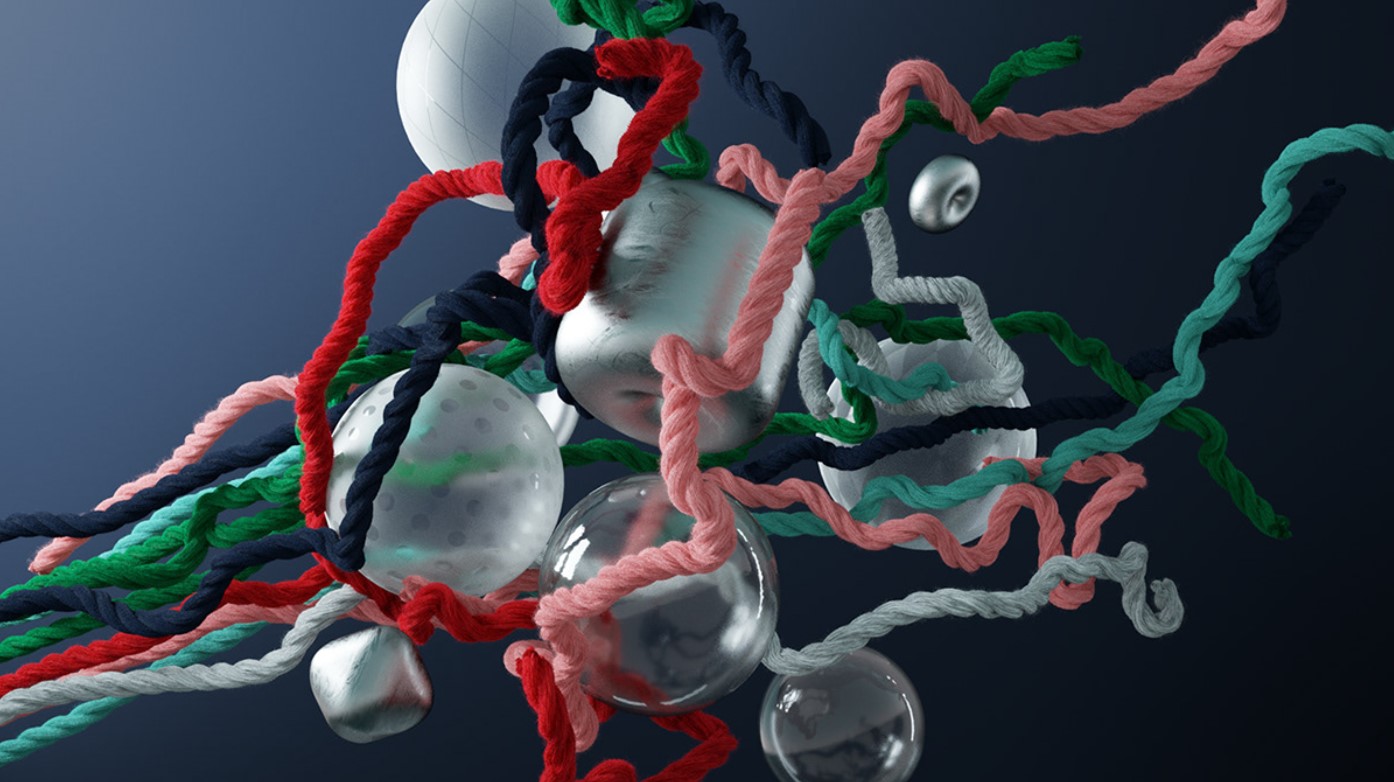If you are going to buy a rug or you work in carpets and rugs industry, it is crucial for you to know about different types of materials used in them and also have some information about their differences, in order to compare them and have an understanding.
Wool Rugs
Wool is the benchmark material for most rugs and carpets, it gives warmth and an attractive appearance. Wool is soft, strong and durable and is excellent for absorbing moisture, a natural air filter for your room. It has excellent elasticity and has a natural resistance to dirt, wear and tear. Wool does not burns over a flame but smolders.
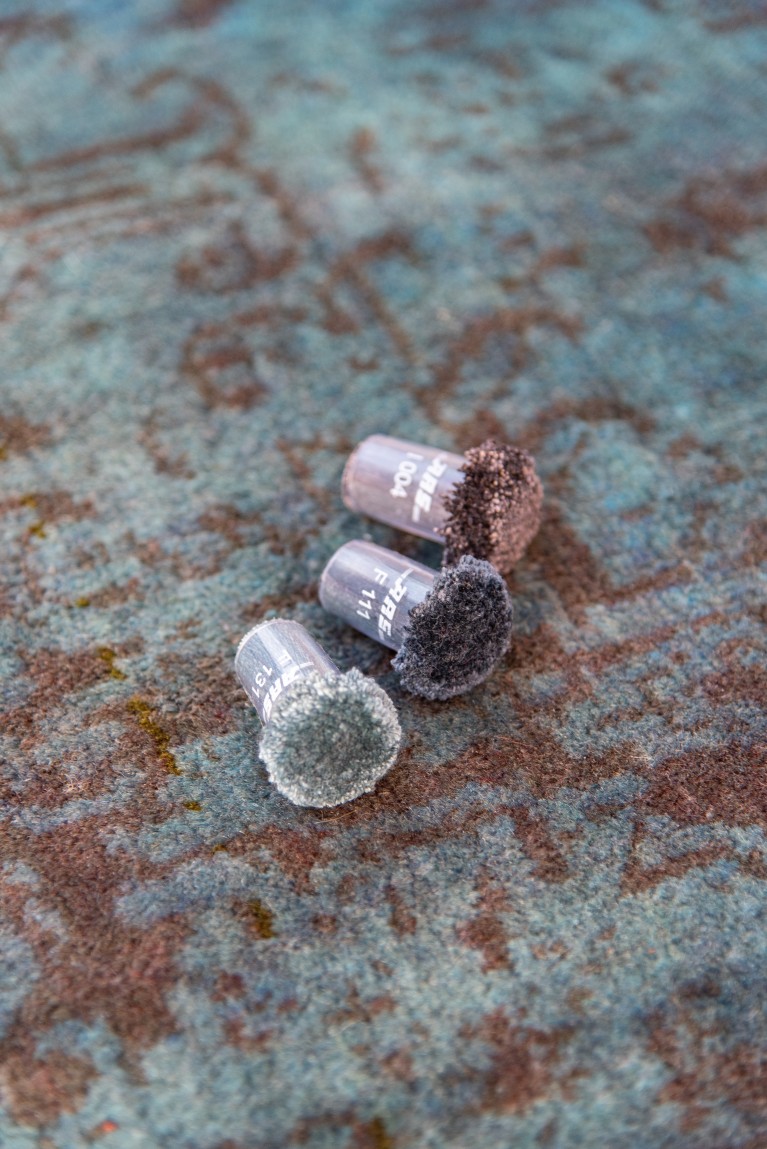
Characteristics of Wool
- It is warm.
- It resists crushing.
- It resists wear and tear.
- It is light-weight and durable.
- It absorbs moisture.
- It retains shape.
- It resists flames, smoldering instead of burning.
- Has good stain resistance.
As a material, wool is the most sought after when it comes to rugs. Aside from its benefits as a material for a floor covering wool provides health benefits over other materials. The main downside to wool is the cost, woolen rugs tend to be more expensive than most other materials. In addition to this, the vibrant colors that are achieved in synthetic materials such as acrylic are not always achievable in wool. Wool is also susceptible to dampness and over-wetting should be avoided during cleaning. Wool rugs can fade given strong UV exposure, not that this is an issue for most of us in the UK! Finally, wool is the natural habitat of the carpet moth, so care needs to be taken when left for long periods undisturbed, particularly in dark or damp spots such as unused rooms or under heavy furniture.
Acrylic Rugs
Acrylic is a fine, soft and luxurious fabric used in many rugs to give striking colors as well as good stain resistance. Acrylic fabric is made from a man-made fiber which gives the appearance and feel of wool. It dyes well, taking vibrant colors well. The fabric breathes, it absorbs and releases moisture quickly. Crucially for rugs Acrylic resists moths, oil and chemicals, and also sunlight degradation. It is softer than wool but does not deal with crushing as well.
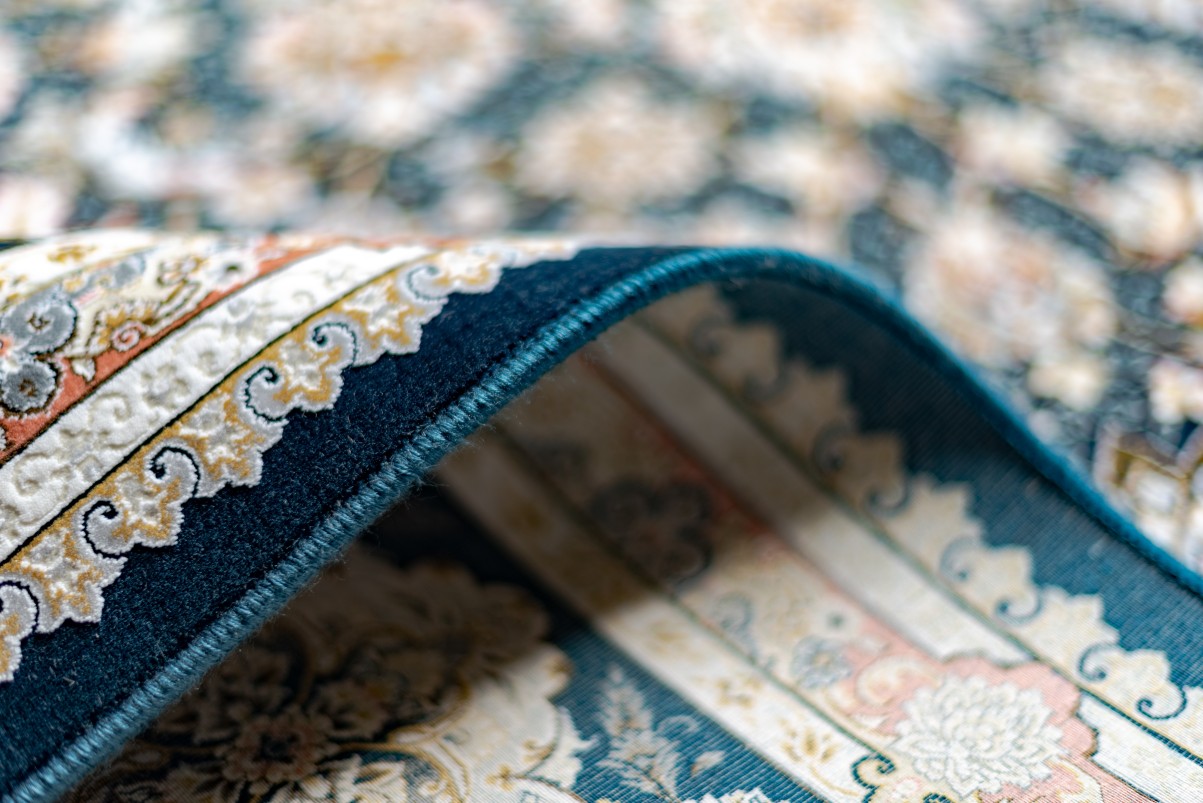
Characteristics of Acrylic
- It is lightweight, soft, and warm.
- It dyes to bright colors with excellent color fastness.
- It absorbs and releases moisture quickly, thus allowing the fabric to “breathe”.
- It is resilient, retains its shape, and resists shrinkage and wrinkles.
- It has flexible aesthetics for wool-like, cotton-like or blended appearance.
- It is resistant to moths, oil and chemicals, and sunlight degradation.
Acrylic rugs offer a similar texture to wool at a lower price-point. The material is very resistant to stains and damage with excellent color fastness. Acrylic is perhaps one of the materials used in rugs that its characteristics are most determined by the quality and density used, acrylic rugs can be low-end, cheap rugs that are not particularly hard-wearing, to higher-end, vibrant design led rugs with good resilience and stain resistance.
Polypropylene Rugs
Polypropylene, also referred to as heatset and occasionally freeze is a hard-wearing fabric which takes colors well. With a similar touch to wool the fabric is stain resistant, easily washable and abrasive resistant. It is a very common and popular fabric in machine-made rugs due to its wool-like qualities, strength and of production.
Polypropylene is a great value material offering many benefits, its main drawback is that it does not have the same bounce-back abilities as wool, similar to acrylic unless treated (although these days most rugs and carpets are) it can have issues with sun-fade, flame resistance and static. Polypropylene rugs have a very similar look to wool, although some can be more waxy to the touch.
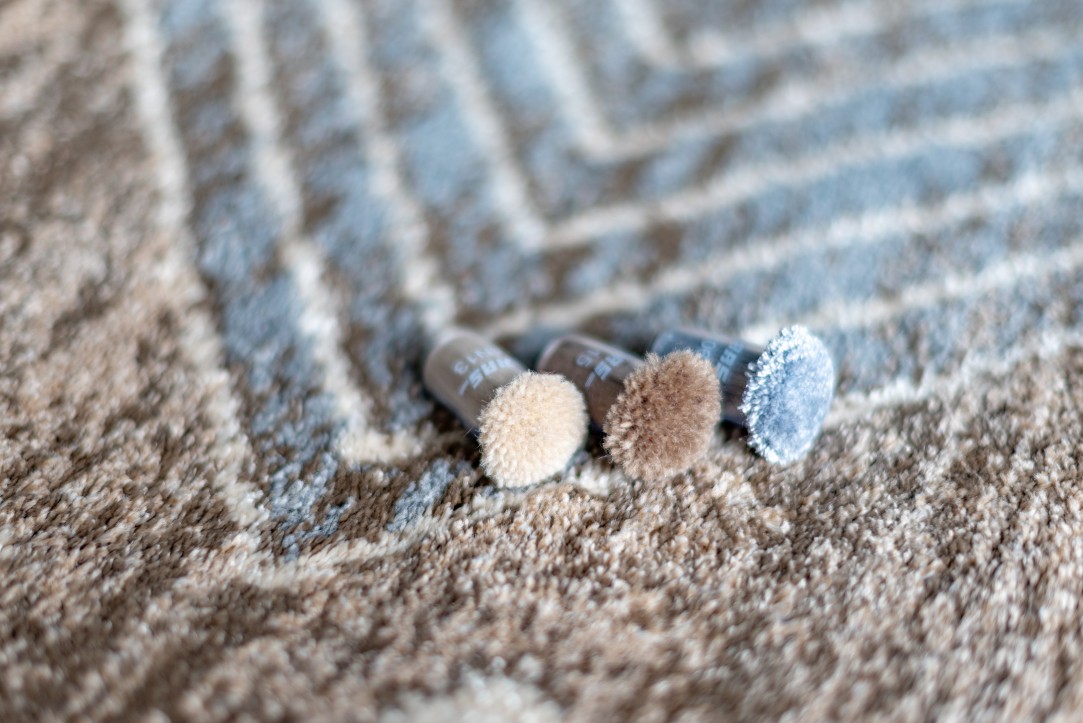
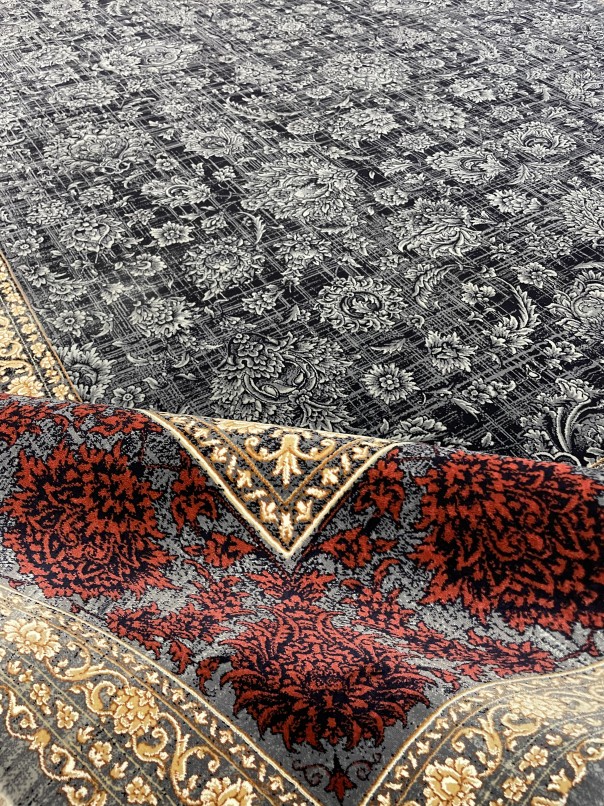
Characteristics of Polypropylene Rugs
- Stain resistant.
- Easily cleaned – some bleach cleanable.
- Resistant to mildew.
- Have good abrasion resistance.
- Prone flattening quicker than other fabrics.
- Not easily damaged by sunlight or weather.
- Do not absorb moisture making them damp resistant.
Viscose (Art Silk) Rugs
Viscose is neither fully man-made nor natural. It is made by regenerating natural materials into a usable form. The non-static material is often created by mercerizing wood, hemp or cotton to create a plush, silk-like texture. The treated fibers give a luxurious material with high luster or sheen.
Viscose Rayon was developed in France in the 1890s and was then named as ‘artificial silk’. In the year 1924, it was named as ‘rayon’ and was officially adopted by the textile industry. It is made from wood pulp, which is a naturally-occurring cellulose-based raw material. Hence, the properties of rayon fabric are similar to natural cellulose fibers like cotton or linen. Most rugs made using viscose are hand-tufted, made in India where many wool rugs are made. The cost of viscose is actually higher due to the processes involved in creating the material, making it similarly priced to New Zealand wool rugs.
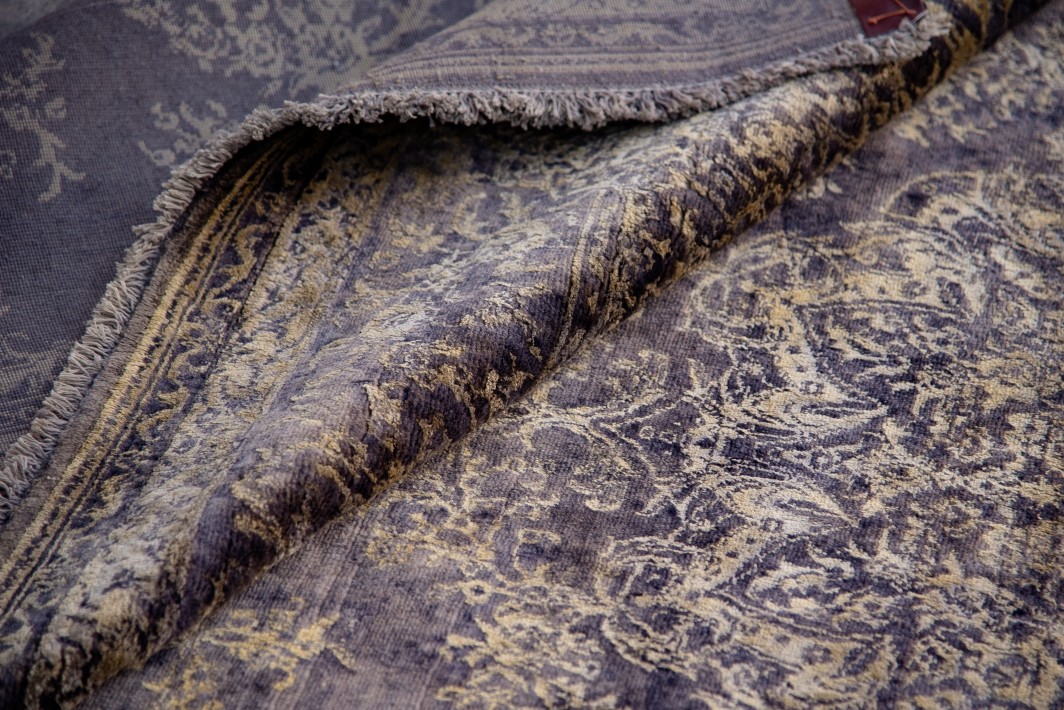
Characteristics of Viscose Rugs
- High sheen
- Silk like touch
- Soft and cool
- Breathable
- Easily dyed in vivid colors
- Abrasion resistant
- Insect resistant
- Anti-static
- Loses strength when wet
- Poor stain resistance
- Relatively expensive
Viscose is an excellent choice for silk-like rugs and highlights without the cost of real silk. It is extremely soft and luxurious, looks and feels like silk and can look stunning in the right home. It does however have poor stain resistance. Because viscose loses strength when wet it can be difficult to wash, it is important not to heavily disturb the pile when wet (i.e. do not scrub it, particularly not in a circular motion) and not to use hot water in a similar way to real silk
Subscribe to our free newsletter
if you want to know about us and the latest collections and news, please add your email address and subscribe

